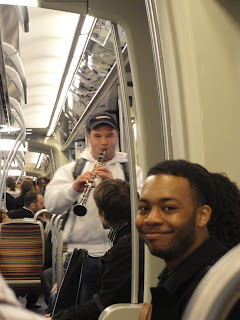 |
| Ein Himmel über Berlin |
Blog Entry III
It is sad to say that our trip, at least the business portion, is drawing to an end. Before I delve into the details that encompassed the day I have to say this trip was by far the most culturally and intellectually "enlightening" trip that I have been on in a while. I definitely recommend, if it is financially feasible, to study abroad. Not only do you get the chance to stimulate yourself in an environment much different than your own, but you get to meet students that have similar interests and aspirations.
With that out of the way our day began by meeting with Dr. Kirsten Westphal who elaborated on Germany’s growing dependency on Russia's natural gas. Dr Westphal discussed the various global and security issues that Germany deals with, such as the large share of gross gas supply in Germany coming from Russia which further stresses the notion of maintaining a positive relationship with Russia ensuring them as a reliable main gas provider. After a lengthy discussion with Dr. Westphal, we were met by Dr. Muriel Asseburg and her associate.
In my personal opinion this was the most interesting lecture of the trip as we received an inside look on German relations with the Middle East. I must admit I was taken back by the nature of the discussion because, unfortunately, I only have a minimal understanding of the current conflicts within Egypt, Yemen, Libya, etc. Our lecturers provided us with a very elaborate overview.
Lastly our meeting with Dr. Maria Rotter was somewhat more relaxed than our previous meetings however a nice change of pace from a week flooded with more than informative lectures and meetings. With Dr. Rotter we discussed German and French relations along with Germany’s position on the European Agenda as a whole.
In retrospect I was a little afraid of the possibility of culture shock upon arrival but as the week went on it was a lot easier to integrate within the society than I thought. I am more than appreciative of the warm, receptive nature of all of our speakers and am sincerely thankful to Old Dominion University, Dr, Karp, Konrad Adenauer Stiftung, and any others that helped make this trip possible.














































